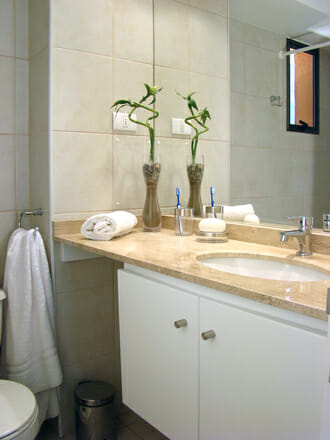Your Guide to HOA PLUMBING
If you come home to find that your sink or bathtub is overflowing with water and you know you’ve not used any water, the chances are that there is leak or problem in the shared lines in your building. If a problem is not affecting anyone else, then it is likely to be an isolated issue, but how do you know who is responsible for any issues in your association.
HOA Responsibilities
Unless there are governing documents that have other provisions, the HOA is responsible for the repair, replacement and maintenance of all plumbing in the common areas. Unfortunately, when there is a leak in one unit, it tends to cause problems to other residents in the association. You may find that your condominium documentation, including the CC&Rs provide the answers to any issues in the “gray area” of responsibility. Many documents will detail that the unit owner has the responsibility for pipe repair, but the association is responsible for repairs to the drywall, regardless of cause, location or fault.
Owner Responsibilities
Generally, the responsibility for maintaining plumbing fixtures and lines remain with the condominium owner. This includes maintaining appliances, sinks, garbage disposals, drains, supply lines, drain lines until they connect to the main line, toilets, water and drain lines that only serve the unit and its water heater.
Common Area Pipes
Generally, these pipes run vertically and serve multiple units. Since these are common area systems, they fall under the Association’s responsibility to maintain and repair. The only exception to this tends to be if the problem is in a pipe branching off from the common pipe and only serving your unit.
Since these pipes serve several units in a particular area of the building, if a problem develops it is likely to cause problems in more than one unit. Therefore, if both you and your neighbor are having the same problem, such as backups, slow drains or sewer smells, it is likely to be a fault in a common area pipe. In these instances, the problem needs to be reported to your management company board to have it addressed.
Detecting a Common Area Pipe Problem
If there is a clog in a common area pipe, it tends to cause toilet, shower or sink backups in the units nearest to and above the clog. This is highlighted when water is being used on the floors above. When the clog is below the first floor, there can be serious backup issues in the first floor units as water is used in the units above.
Blockages in common area pipes are typically the result of someone putting non-soluble particulates in the drainage system. This means that even though the common area pipes are the responsibility of the Association if it is determined that you are responsible for the problem through negligent actions, you may face a costly repair bill. Therefore, it is important that you take care to properly maintain your drains by not flushing inappropriate materials or allowing grease, oil or solids into drains. Remember your InSinkErator® or disposal is NOT a garbage can. Save yourself the expense of plumbing problems by dumping your TRASH in your trashcan.
By Giovanni Longo President Flood Brothers Plumbing
Giovanni Longo is a 3rd generation master plumber who has been practicing his craft and trade in the greater Los Angeles area for well over a decade and a half. A plumbing and hydraulics-engineering innovator, Giovanni’s particular world-class expertise focuses on dealing with challenging sewer system designs as well as resolving complex commercial and residential draining issues. As a certified Flood Mitigation expert, he is also well versed in a wide variety of water damage and remediation solutions.





